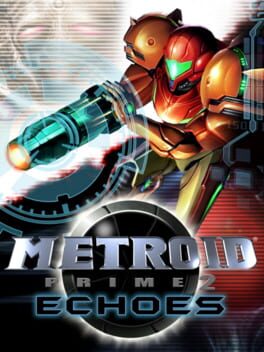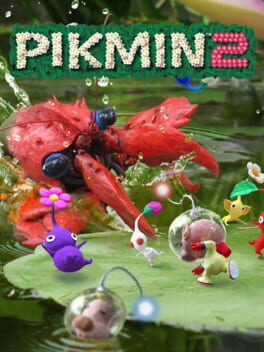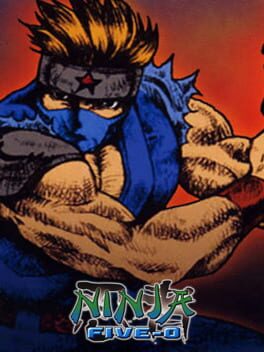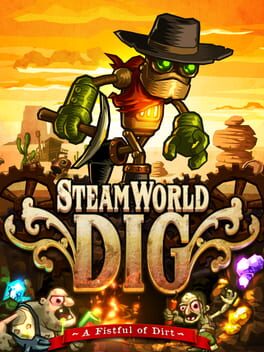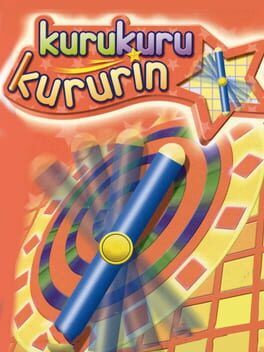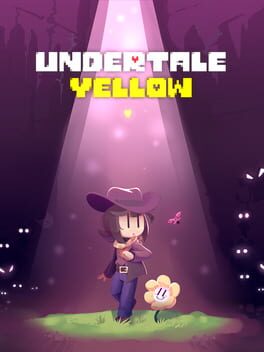HeyItMeBen
Bio
I have played excessively too many video games, and now other people can comprehend that
I have played excessively too many video games, and now other people can comprehend that
Badges

Gone Gold
Received 5+ likes on a review while featured on the front page

Shreked
Found the secret ogre page

GOTY '23
Participated in the 2023 Game of the Year Event

On Schedule
Journaled games once a day for a week straight

Popular
Gained 15+ followers

Liked
Gained 10+ total review likes

Epic Gamer
Played 1000+ games

Roadtrip
Voted for at least 3 features on the roadmap

Organized
Created a list folder with 5+ lists

Busy Day
Journaled 5+ games in a single day

Elite Gamer
Played 500+ games

Gamer
Played 250+ games

Best Friends
Become mutual friends with at least 3 others

Noticed
Gained 3+ followers

N00b
Played 100+ games

2 Years of Service
Being part of the Backloggd community for 2 years
Favorite Games
1167
Total Games Played
034
Played in 2024
146
Games Backloggd
Recently Played See More
Recently Reviewed See More
Never have I ever played a game that mimicked Dark Souls to this degree, which isn't necessarily a bad thing, but it does feel uncanny. From the pace of combat and the button mappings to the incredibly funny usage of L3 to do the most pointless jump imaginable, Lies of P is a Dark Souls game to the same degree Elden Ring is. This lays a benefical foundation, yet I found myself comparing it to Souls unfavourably in more than a few ways.
The biggest core combat change is the adoption of Sekiro's parry mechanics. Blocking is strong here, as you only take temporary damage from most attacks, which can be replenished by going on the offense yourself. Perfectly timing a block will deflect the attack, meaning you take no damage and also lower the enemy's invisible posture guage (which took me some time to catch onto). Your dodges still work the way you'd expect, though, allowing you to i-frame through moves with ease. While I found enemies generally easy to parry, oftentimes I found myself opting for a dodge instead, especially if it opened my enemy up for a bigger punish window. Besides this, it truly does play out like Dark Souls, specifically 3 with its faster foes, special moves and charged strong attacks.
The weapon system is intuitive yet brilliant. A weapon's handle determines its moveset while the blade alters speed and range. This is an oversimplification, but gets to the very core of why this worked for me. You can experiment with different combos effortlessly, and while they're not going to overhaul the game entirely, they set a foundation for fantastic replayability and expression of build, which is otherwise pretty limited. I found combat to be pretty dull for the first few hours, though. The game litters basic humanoid puppets everywhere, and when a new faction of enemies is introduced, they just feel like another flavour of puppets. It takes some time before different shaped and sized contraptions and creatures become frequent, but the game does eventually reach a point I was fully satisfied with. The endgame in particular is constantly introducing unique encounters, and I just wondered why they couldn't have scattered some more into the early game.
As for the bosses, I have mixed feelings. There was a great buildup to Romeo, many fights surpassing the previous encounter. Romeo was the hardest yet, and an incredibly satisfying challenge to overcome. Not exceedingly difficult by any means, but just right for his position in the game. What happened after was a tad awkward, as I found every boss following the king of the puppets to range from easy to a mild challenge. I understand difficulty is subjective, and different builds struggle in different areas, but I'm almost certain I died more to the clown puppet miniboss than I did to any main boss following Romeo, which just felt wrong. The biggest letdown was the Corrupted Parade Master, which the game spends a solid chunk of time building up only to be a cutscene-less follow up to the game's first boss. This is a strong concept, but the game failed to develop the fight in any meaningfully exciting way, and comes off as a truly sad conclusion to one of the game's most heart pumping sections.
This isn't to say I didn't enjoy these bosses, though. The design and spectacle didn't often match how easy some of these foes were to topple, but it did make up for it somewhat. The Puppet-Devouring Green Monster is creepy snd creative in all the right ways, whereas Simon Manus blew me away with just how outstandingly over the top his moves and visuals were. With a big difficulty increase, I think he'd be an all-time favourite Souls boss for me. I emphasise difficulty because I feel the moment you defeat a tough (but fair) boss with beautiful design is indescribably fun, and the game only came close to achieving that a couple times. Because there was one boss I've neglected to mention that killed me more than Romeo, and was even more fun: Laxasia. The first phase is a highly punishing brawl with an opponent similar in stature to yourself - a FromSoft design classic. The second phase massively ups the speed, messing with my parry timings and forcing me to better implement dodges and understand her combo strings. The best part? You can volley her projectiles just like Ocarina of Time's Ganondorf. Near flawless action.
Bosses are so integral to the success of this genre, but I'd like to briefly touch on another aspect of the game I didn't love: the areas! The unfortunate thing is that I struggle to verbalize why I didn't enjoy them too much because* they're so forgettable. Visually? Brill. Conceptually? Decent. Yet you interact with each level in almost the exact same way. Very few unique environmental hazards, with the ones there (like the poison swamp) being cheap and dull. There's little to explore, with most places having a linear path with a couple branching dead ends throughout. The lack of friction keeps the pace brisk, but utterly meandering. Again, the end of the game remedies this to some degree, providing a captivating tower to climb, but it's too little too late. This world may be as broad as Dark Souls, but it's nowhere near as deep.
Somehow, I've said all of this without mentioning the wonderful story, and I'll be leaving it as just that passing mention. It won't wow you, but it culminates better than any FromSoft title, and several NPCs had me smiling or vergig on tears. To me, it encapsulates what the game is: great!! It didn't sweep me off my feet in the same way as a Dark Souls, but it kept me engaged and pleased consistently. I really, really like Lies of P, and if the developers go on to create something new, I'm likely there day one. They have so much room to improve and it's just so refreshing to play something with such high production values and heart from somewhere like Korea, which I personally haven't experienced before. We're in good hands here.
The biggest core combat change is the adoption of Sekiro's parry mechanics. Blocking is strong here, as you only take temporary damage from most attacks, which can be replenished by going on the offense yourself. Perfectly timing a block will deflect the attack, meaning you take no damage and also lower the enemy's invisible posture guage (which took me some time to catch onto). Your dodges still work the way you'd expect, though, allowing you to i-frame through moves with ease. While I found enemies generally easy to parry, oftentimes I found myself opting for a dodge instead, especially if it opened my enemy up for a bigger punish window. Besides this, it truly does play out like Dark Souls, specifically 3 with its faster foes, special moves and charged strong attacks.
The weapon system is intuitive yet brilliant. A weapon's handle determines its moveset while the blade alters speed and range. This is an oversimplification, but gets to the very core of why this worked for me. You can experiment with different combos effortlessly, and while they're not going to overhaul the game entirely, they set a foundation for fantastic replayability and expression of build, which is otherwise pretty limited. I found combat to be pretty dull for the first few hours, though. The game litters basic humanoid puppets everywhere, and when a new faction of enemies is introduced, they just feel like another flavour of puppets. It takes some time before different shaped and sized contraptions and creatures become frequent, but the game does eventually reach a point I was fully satisfied with. The endgame in particular is constantly introducing unique encounters, and I just wondered why they couldn't have scattered some more into the early game.
As for the bosses, I have mixed feelings. There was a great buildup to Romeo, many fights surpassing the previous encounter. Romeo was the hardest yet, and an incredibly satisfying challenge to overcome. Not exceedingly difficult by any means, but just right for his position in the game. What happened after was a tad awkward, as I found every boss following the king of the puppets to range from easy to a mild challenge. I understand difficulty is subjective, and different builds struggle in different areas, but I'm almost certain I died more to the clown puppet miniboss than I did to any main boss following Romeo, which just felt wrong. The biggest letdown was the Corrupted Parade Master, which the game spends a solid chunk of time building up only to be a cutscene-less follow up to the game's first boss. This is a strong concept, but the game failed to develop the fight in any meaningfully exciting way, and comes off as a truly sad conclusion to one of the game's most heart pumping sections.
This isn't to say I didn't enjoy these bosses, though. The design and spectacle didn't often match how easy some of these foes were to topple, but it did make up for it somewhat. The Puppet-Devouring Green Monster is creepy snd creative in all the right ways, whereas Simon Manus blew me away with just how outstandingly over the top his moves and visuals were. With a big difficulty increase, I think he'd be an all-time favourite Souls boss for me. I emphasise difficulty because I feel the moment you defeat a tough (but fair) boss with beautiful design is indescribably fun, and the game only came close to achieving that a couple times. Because there was one boss I've neglected to mention that killed me more than Romeo, and was even more fun: Laxasia. The first phase is a highly punishing brawl with an opponent similar in stature to yourself - a FromSoft design classic. The second phase massively ups the speed, messing with my parry timings and forcing me to better implement dodges and understand her combo strings. The best part? You can volley her projectiles just like Ocarina of Time's Ganondorf. Near flawless action.
Bosses are so integral to the success of this genre, but I'd like to briefly touch on another aspect of the game I didn't love: the areas! The unfortunate thing is that I struggle to verbalize why I didn't enjoy them too much because* they're so forgettable. Visually? Brill. Conceptually? Decent. Yet you interact with each level in almost the exact same way. Very few unique environmental hazards, with the ones there (like the poison swamp) being cheap and dull. There's little to explore, with most places having a linear path with a couple branching dead ends throughout. The lack of friction keeps the pace brisk, but utterly meandering. Again, the end of the game remedies this to some degree, providing a captivating tower to climb, but it's too little too late. This world may be as broad as Dark Souls, but it's nowhere near as deep.
Somehow, I've said all of this without mentioning the wonderful story, and I'll be leaving it as just that passing mention. It won't wow you, but it culminates better than any FromSoft title, and several NPCs had me smiling or vergig on tears. To me, it encapsulates what the game is: great!! It didn't sweep me off my feet in the same way as a Dark Souls, but it kept me engaged and pleased consistently. I really, really like Lies of P, and if the developers go on to create something new, I'm likely there day one. They have so much room to improve and it's just so refreshing to play something with such high production values and heart from somewhere like Korea, which I personally haven't experienced before. We're in good hands here.
This game is deceptively simple. You spin continuously, certain surfaces will switch your rotation and your goal is to make it to the end of each level mostly unscathed.
While I can't go into too much depth about what worked and what didn't, what I can attest to is that I entered into a fugue state while playing Kuru Kuru Kururin. What was supposed to kill half an hour ended up swallowing up my night, as I noticed the clock had ticked past midnight and my partner was readying up for bed while I grappled with the final level. It only took me 2 hours, yet felt much shorter than that even. The pace is brisk and the game never wears out its ideas, so I suppose you can take that as the highest praise imaginable.
The truth is that, while fun, the game will likely leave your thoughts almost as quickly as it entered them. A perfectly fine 7 out of 10. Quintessentially so, even! I'll definitely give the rest of the series a go too.
While I can't go into too much depth about what worked and what didn't, what I can attest to is that I entered into a fugue state while playing Kuru Kuru Kururin. What was supposed to kill half an hour ended up swallowing up my night, as I noticed the clock had ticked past midnight and my partner was readying up for bed while I grappled with the final level. It only took me 2 hours, yet felt much shorter than that even. The pace is brisk and the game never wears out its ideas, so I suppose you can take that as the highest praise imaginable.
The truth is that, while fun, the game will likely leave your thoughts almost as quickly as it entered them. A perfectly fine 7 out of 10. Quintessentially so, even! I'll definitely give the rest of the series a go too.
Undertale Yellow is a game I've heard rumblings about for years. As much as I adored Undertale, I can't say I was too interested in engaging with much of its fan works. What makes the game special is its uniqueness, that it's not just another RPG. It kickstarted an indie RPG boon which has had some wonderful results. Point is, an Undertale prequel meant very little to me. I didn't need more backstory, nor did I need another game that played just like Undertale. After seeing the release date trailer, I decided I should play it. There must be some merit to a project that's been in development this long, right?
The first half of Undertale Yellow is fairly derivative. You travel through the ruins and Snowdin, and while these areas are different from the ones in Undertale, I felt myself going through the motions nonetheless. You meet a surprisingly friendly monster in the ruins, you explore their house then leave. You meet a royal guard obsessed with puzzles in Snowdin, then they give up on capturing you and become your friend instead. It's rote, but fun. There's plenty new here, from the enemies and remixed music to the actual areas, which are solid extensions to Undertale's. Martlett was greatly endearing, and her fight was a highlight of the early game. Yet the whole time, I just felt the team had gone the easiest direction for a game like this. It was incredibly safe, essentially a re-telling of Undertale's story, which would lead to a more unfortunate conclusion... right?
The Dunes were the big addition to this game, though they don't immediately stop the game from feeling like a path well tread. The trek through this sandy place is consistently engaging, with solid interactions, bosses and a segment in the Wild East that felt truly unique. The addition of Starlo and Ceroba keeps things fresh enough, but travelling through the Steamworks felt a little too similar to Mettaton's section in Undertale. Enough new, and some fantastic moments throughout, but that feeling of deja vu continued to linger.
This was until the very end of this portion, where the game flips your expectations upside down. While I felt the game careening into an encounter with Asgore, it goes totally off rails with a twist I could never have seen coming. This part kept me on my toes, with a feeling of dread creeping up. I'd grown far too comfortable, and the game exploited that. In this respect, while I felt the game fun but plodding up to this point, the build up to this moment had been utterly worth it. Everything after is fabulous, and the final boss was more captivating than anything the franchise had thrown at me prior. Gameplay and narrative wrapped together effortlessly, which had me trying to avoid some of the most brutal bullet patterns in the game while wiping the tears from my face.
The pacifict route end phenomenally, but the other routes are no slouch either. The neutral route has an exhilarating - yet familiar - final boss, making it the route I enjoyed the least. The genocide route was tedious, and I feel as if the structure could have been a tad different from Undertale's, but the bosses did not disappoint at all.
Undertale Yellow is brilliant. While that initial experience of finding the game deriviative keeps me from giving it a perfect score, the end of the pacifist route will stick with me for a very long time, possibly longer than anything in Undertale or Deltarune. Fans are truly something special, eh?
The first half of Undertale Yellow is fairly derivative. You travel through the ruins and Snowdin, and while these areas are different from the ones in Undertale, I felt myself going through the motions nonetheless. You meet a surprisingly friendly monster in the ruins, you explore their house then leave. You meet a royal guard obsessed with puzzles in Snowdin, then they give up on capturing you and become your friend instead. It's rote, but fun. There's plenty new here, from the enemies and remixed music to the actual areas, which are solid extensions to Undertale's. Martlett was greatly endearing, and her fight was a highlight of the early game. Yet the whole time, I just felt the team had gone the easiest direction for a game like this. It was incredibly safe, essentially a re-telling of Undertale's story, which would lead to a more unfortunate conclusion... right?
The Dunes were the big addition to this game, though they don't immediately stop the game from feeling like a path well tread. The trek through this sandy place is consistently engaging, with solid interactions, bosses and a segment in the Wild East that felt truly unique. The addition of Starlo and Ceroba keeps things fresh enough, but travelling through the Steamworks felt a little too similar to Mettaton's section in Undertale. Enough new, and some fantastic moments throughout, but that feeling of deja vu continued to linger.
This was until the very end of this portion, where the game flips your expectations upside down. While I felt the game careening into an encounter with Asgore, it goes totally off rails with a twist I could never have seen coming. This part kept me on my toes, with a feeling of dread creeping up. I'd grown far too comfortable, and the game exploited that. In this respect, while I felt the game fun but plodding up to this point, the build up to this moment had been utterly worth it. Everything after is fabulous, and the final boss was more captivating than anything the franchise had thrown at me prior. Gameplay and narrative wrapped together effortlessly, which had me trying to avoid some of the most brutal bullet patterns in the game while wiping the tears from my face.
The pacifict route end phenomenally, but the other routes are no slouch either. The neutral route has an exhilarating - yet familiar - final boss, making it the route I enjoyed the least. The genocide route was tedious, and I feel as if the structure could have been a tad different from Undertale's, but the bosses did not disappoint at all.
Undertale Yellow is brilliant. While that initial experience of finding the game deriviative keeps me from giving it a perfect score, the end of the pacifist route will stick with me for a very long time, possibly longer than anything in Undertale or Deltarune. Fans are truly something special, eh?

